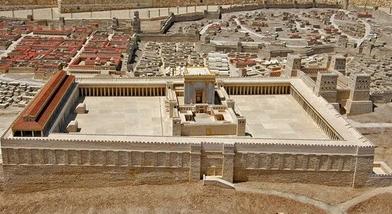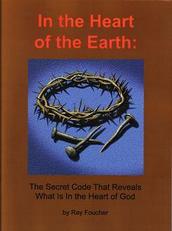 |
 |
 |
||||||||||||||||||
Where is the Court of the Gentiles?The Court of the Gentiles is referred to in Revelation chapter 11: "But the court which is without the temple leave out, and measure it not; for it is given unto the Gentiles: and the holy city shall they tread under foot forty and two months." (Rev 11:2) Revelation refers to something called the court (in association with the temple) and describes it as being "given unto the Gentiles." We will refer to it here as "the court of the Gentiles" because, at least for a time, it is given to them. The Historical Court of the Gentiles The Court of the Gentiles is the area from which Jesus drove out the money changers. He was clearing the Court of the Gentiles the purpose of which was described by Isaiah: "My house will be a house of prayer for all nations,"(Isa 56:7) The "all nations" connects with this area where anyone was able to come to worship. It is shown as the large open area shown here:  The Court of the Gentiles is the large open area within the Temple compound. Note of interest: In March of 2011, the Vatican sponsored a meeting at the UNESCO headquarters in Paris. It was known as the first Courtyard of the Gentiles meeting the name being taken from the outer space around the Temple in ancient Jerusalem. There non-Jews could come to inquire about the Jewish faith and, if they desired, to pray to God. The Court of the Gentiles in the Future
The sanctuary includes a place and function of judgment; indeed, that is a major purpose of the sanctuary. There is a heavenly judgment scene described in Daniel: "I beheld till the thrones were cast down, and the Ancient of days did sit, whose garment was white as snow, and the hair of his head like the pure wool: his throne was like the fiery flame, and his wheels as burning fire. A fiery stream issued and came forth from before him: thousand thousands ministered unto him, and ten thousand times ten thousand stood before him: the judgment was set, and the books were opened." (Dan 7:9-10) This scene could not have happened in the earthly sanctuary with more than a hundred million angels in attendance. It was referring to judgment happening in heaven. It happened in heaven where there is also a sanctuary: "For he hath looked down from the height of his sanctuary; from heaven did the LORD behold the earth;" (Psa 102:19) In both the earthly and the heavenly sanctuaries there is a holy place and a most holy place and it seems that they contain equivalent pieces of furniture though on quite different scales. The Holy Place The Most Holy Place So we see that for both the holy and the most holy places there was a correspondence between the earthly and the heavenly. But what about the courtyard? The Courtyard Of course, the answer is quite plain: the sacrifice of the only-begotten Son of God was what all the other sacrifices pointed to. So Jesus was the sacrifice of the heavenly system but where did He die? - On the cross of Calvary on the earth. So it would be correct to say that the earth itself is the courtyard of the heavenly sanctuary and the cross of Calvary was its altar. "Thus saith the LORD, The heaven is my throne, and the earth is my footstool: where is the house that ye build unto me? and where is the place of my rest?" (Isa 66:1) Again, if one studies the sanctuary and looks at any Biblical descriptions of the heavenly sanctuary you see no mention of an altar for offerings there. There is certainly no record of any sacrifice being offered in heaven. The earthly sanctuary and its types were symbolic of the heavenly. Animals were slain to symbolize the death of Christ who was the great antitype to which all of the sacrifices pointed. Jesus' death was the sacrifice of the antitypical or heavenly system but that sacrifice happened on earth, not in heaven. So where is "the court which is without the temple" referred to in Revelation 11:2? It is not in heaven. It is either the court of a temple on earth of which there is not one at present or it is the whole earth considered as a part of the heavenly sanctuary. So, by saying "the court ... is given unto the Gentiles" revelation could be telling us that the earth will be controlled by the Gentiles or the Nations or non-believers for a period of time. "But the court which is without the temple leave out, and measure it not; for it is given unto the Gentiles: and the holy city shall they tread under foot forty and two months." (Rev 11:2) |
Prophecy Newsletter
Receive
free newsletters
reporting and analysing world events related to prophecy.
The Greek has multiple words for forgiveness? God forgives (charizomai) whether we ask or not. Receiving forgiveness (apheimi) is by our choice.
God always forgives!
|
|||||||||||||||||||
|
|
||||||||||||||||||||
|
| ||||||||||||||||||||

New! Comments
Have your say about what you just read! Please leave a comment below.